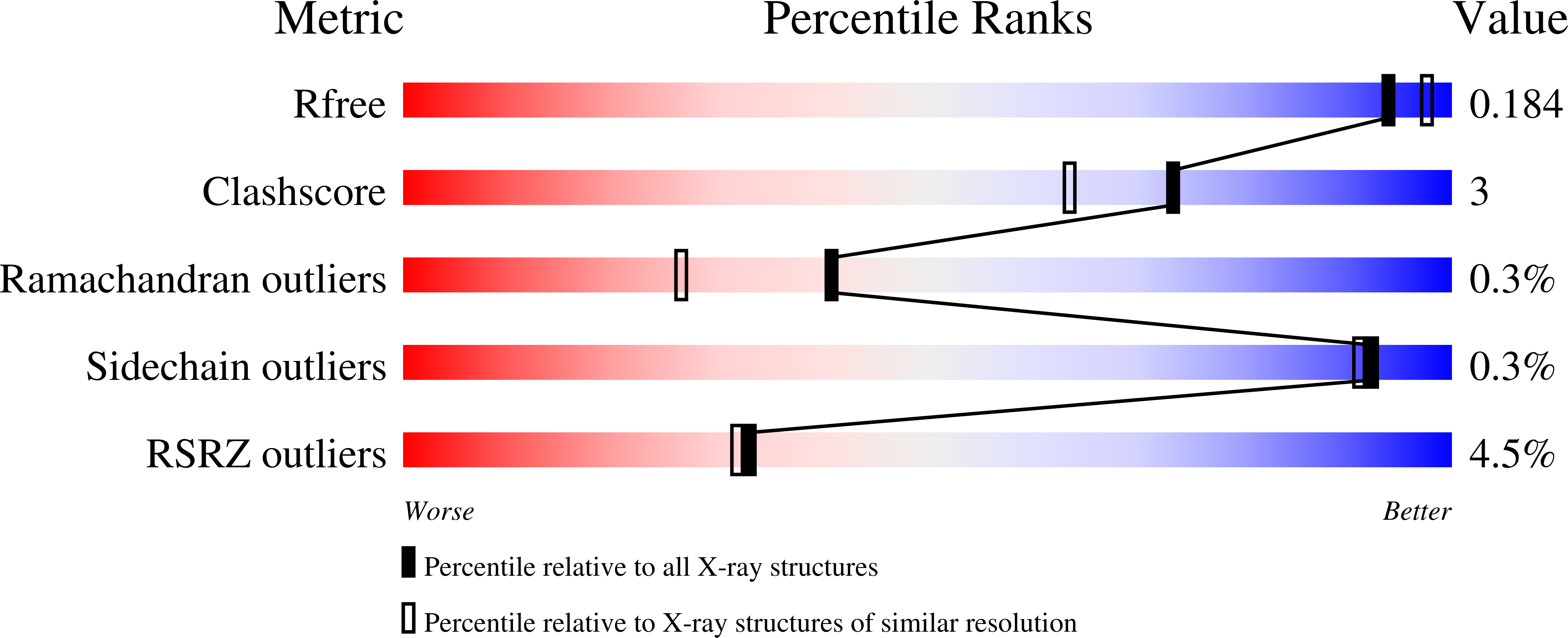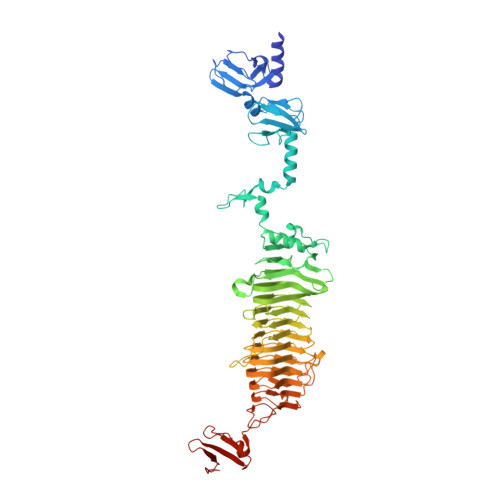Structure and tailspike glycosidase machinery of ORF212 from E. coli O157:H7 phage CBA120 (TSP3).
Greenfield, J., Shang, X., Luo, H., Zhou, Y., Heselpoth, R.D., Nelson, D.C., Herzberg, O.(2019) Sci Rep 9: 7349-7349
- PubMed: 31089181
- DOI: https://doi.org/10.1038/s41598-019-43748-9
- Primary Citation of Related Structures:
6NW9 - PubMed Abstract:
Bacteriophage tailspike proteins mediate virion absorption through reversible primary receptor binding, followed by lipopolysaccharide or exopolysaccharide degradation. The Escherichia coli O157:H7 bacteriophage CBA120 genome encodes four distinct tailspike proteins, annotated as ORFs 210 through 213. Previously, we reported the crystal structure of ORF210 (TSP1). Here we describe the crystal structure of ORF212 (TSP3) determined at 1.85 Å resolution. As observed with other tailspike proteins, TSP3 assembles into a trimer. Each subunit of TSP3 has an N-terminal head domain that is structurally similar to that of TSP1, consistent with their high amino acid sequence identity. In contrast, despite sharing a β-helix fold, the overall structure of the C-terminal catalytic domain of TSP3 is quite different when compared to TSP1. The TSP3 structure suggests that the glycosidase active site resides in a cleft at the interface between two adjacent subunits where three acidic residues, Glu362 and Asp383 on one subunit, and Asp426 on a second subunit, are located in close proximity. Comparing the glycosidase activity of wild-type TSP3 to various point mutants revealed that catalysis requires the carboxyl groups of Glu362 and Asp426, and not of Asp383, confirming the enzyme employs two carboxyl groups to degrade lippopolysaccharide using an acid/base mechanism.
Organizational Affiliation:
Institute for Bioscience and Biotechnology Research, University of Maryland, Rockville, Maryland, USA.























